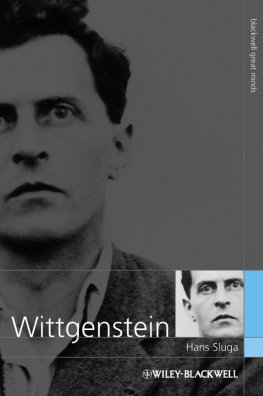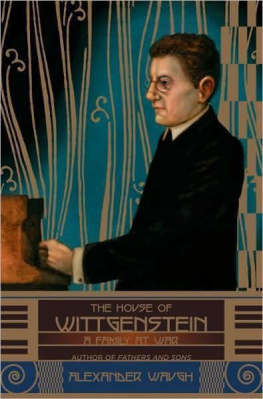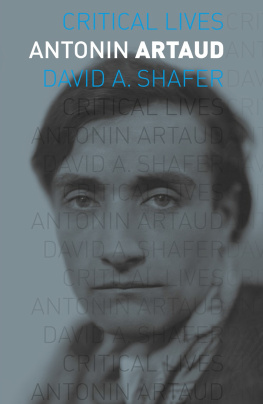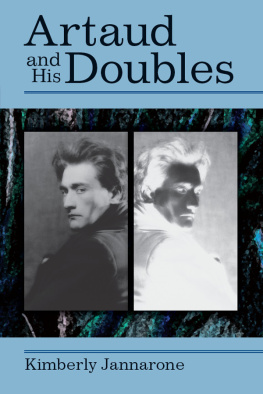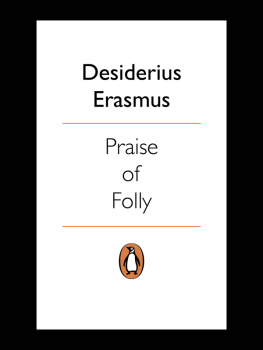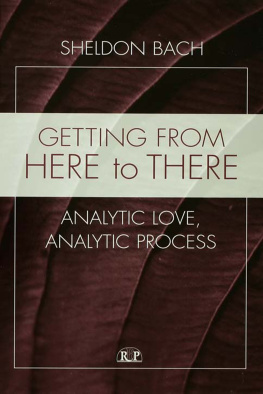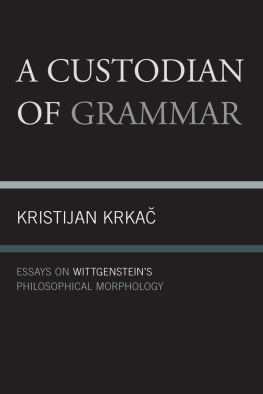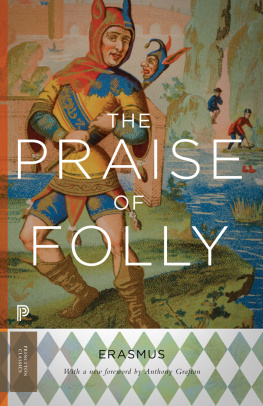Cultural Memory in the Present
Mieke Bal and Hent de Vries, Editors
MOTHER FOLLY
A Tale
Franoise Davoine
Translated by Judith G. Miller
STANFORD UNIVERSITY PRESS
STANFORD, CALIFORNIA
Stanford University Press
Stanford, California
English translation 2014 by the Board of Trustees of the Leland Stanford Junior University. All rights reserved.
Mother Folly was originally published in French in 1998 under the title Mre Folle Editions Arcanes.
Preface by Mieke Bal 2014 by the Board of Trustees of the Leland Stanford Junior University. All rights reserved.
No part of this book may be reproduced or transmitted in any form or by any means, electronic or mechanical, including photocopying and recording, or in any information storage or retrieval system without the prior written permission of Stanford University Press.
Printed in the United States of America on acid-free, archival-quality paper
Library of Congress Cataloging-in-Publication Data
Davoine, Franoise, author.
[Mre folle. English]
Mother folly : a tale / Franoise Davoine ; translated by Judith G. Miller.
pages cm (Cultural memory in the present)
Originally published in French in 1998 under the title Mre folle.
Includes bibliographical references.
ISBN 978-0-8047-8277-7 (cloth : alk. paper)
ISBN 978-0-8047-8278-4 (pbk. : alk. paper)
I. Miller, Judith Graves, translator. II. Title. III. Series: Cultural memory in the present.
PQ2664.A9463M4713 2014
843'.914dc23
2014004713
ISBN 978-0-8047-9223-3 (electronic)
ISBN 978-0-8047-9224-0 (electronic with video clips)
Typeset by Bruce Lundquist in 11/13.5 Adobe Garamond
To Jeanne, Batiste, mile, and Kala
Contents
by Mieke Bal
Authors Note for the American Edition
Mother Folly was inspired by the seminar Madness and Social Ties, which I have been teaching with Jean-Max Gaudillire for many years at the cole des Hautes tudes en Sciences Sociales in Paris, France.
At the end of the book the reader will find references to works consulted that enabled my research. I wish to thank here the participants of the seminar, staff at the psychiatric hospital, and my patients. I am very grateful to them all.
I also wish to thank heartfully: Mieke Bal, Cathy Caruth, Emily-Jane Cohen, Siri Hustvedt, Dyani Gaudillire, Jean-Max Gaudillire, Valrie Waldkerdine, and Judith Miller, my daring translator, who made Mother Follys dream to discover the New World come true.
Franoise Davoine
Preface
Mieke Bal
BEGINNING
Franoise Davoine, author of many bookssome with her partner Jean-Max Gaudillireis an inspired writer of what I call, after Freud, theoretical fiction. In her primary incarnation, she is a French psychoanalyst specializing in the analytical treatment of traumatized people. Her work in this area is world-famous because the world keeps producing so much trauma that its treatment continues to be urgently needed. And Davoines work in this area is impressively successful. This is especially remarkable if we consider Freuds own conviction that the trauma-generated psychosisfor reasons I will explain, I call it madnesscannot be analyzed. The key issue in this debate is the possibility of psychotic patients to perform the necessary transference.
Davoines success is due to her empathic, respectful, and at the same time, down-to-earth approach, but also to her great theoretical mind. For she is not only an effective clinical psychoanalyst but also, as her many books and lectures demonstrate, a very strong theorist, both independent of any school and profoundly knowledgeable about many: Freud, Lacan, the British school, American approaches to psychoanalysis, and aboriginal modes of healing; as well as philosophy, history, classics, sociology, and historical and modern literature. She integrates the collective wisdom and knowledge of these varied sources and disciplines, to develop and articulate, neither eclectically nor with orthodoxy, her unique theory of the psychoanalytic treatment of the mad. Thanks to her open and equality-based approach she demonstrates that the mad are capable of transference after all.
But she is much more than a high-level scholar and clinical practitioner. Two more features are relevant here. Her ongoing seminar Madness and Society at the cole de Hautes tudes en Sciences Sociales in Paris, which she has been teaching for many years with Jean-Max Gaudillire, attracts a consistently large group of active participants, many also practicing in Davoines vein. Its popularity is due to the fact that, as a third element of her intellectual profile, she is also an extremely engaging teacher. This is partly related to the facta fourth of this authors traitsthat she is also a born storyteller. Whether it is about cases or about events in her own life, about History or about small events, Davoines stories are moving, as riveting and as suspenseful as a first-rate murder mystery. Murder is, incidentally, frequently part of her stories; she is deeply invested in understanding and responding to the way violence generates madness.
This book exhibits all four of these traits. Whats more, all four are indispensable to achieving the books ambitious goal, which is to articulate a theory that takes psychoanalysis out of its orthodoxies and makes it what it was always meant to be: a truly social science. And it does so by way of dialogic feeling: argumentation, saying, demonstration, showing, and affective engagement. The result is a book comparable to no other. At once an explanation of a theoretical thesis and a development of a great number of documented case studies, a gripping story and a picture book, a learned treatise and a humorous tale, this book can be read in different ways and for different ends. In my own experience, it bears many re-readings. One look at the opening page says it all: theoretical, narrative, humorous, tragic; the beginning grips readers, whatever their intellectual interests.
The story is positioned in time: All Saints Day was hovering. That makes today, the present of the story, the Day of the Dead. And indeed, the author has just learned that one of her patients has died. This death sets the story as well as the first-person narrators crisis in motion. The narrator immediately begins her self-interrogation: Was I a monster? Just before leaving home, Id almost killed a clumsy insectmechanically, without feelingon the simple pretext it had no business being in my house. Between the huge event of the death of a patient and the automatic gesture of killingbut only almostan insect, Davoine establishes a similarity-in-difference that sets the tone for the entire book.
The encounter with that insect, not coincidentally that mythical social insect, a bee, opens a barrage of associations that lead in a variety of directions. We traverse psychoanalytic theory, sociology, personal reflection on the use or abuse of professional behavior. We also go to classical Greekfor example, the meaning of therapist as buddy, a social function that, since the AIDS crisis, has gained in visibility. And all this is broached in a tone that meanders between playful and serious, while the profound and pertinent thoughts that announce the theoretical thrust of the book are understandable, concrete, and affectively appealing for everyone. Erasmus Folly is introducedthe source for the books titleand the equality between the I and the bee prefigures the theoretical position of equality between patient and analyst that is the foundation of the theoretical and clinical approach to psychoanalysis. All this on the first page.
In this preface I can only touch upon a few elements of this rich book. Given my own intellectual and creative engagement with the book, which inspired me to make a film, I limit myself to its narrative and verbal images, hoping to show these are not simply frivolous. On the contrary, they are the building blocks of its complex but limpidly exposed intellectual, theoretical, and clinical point.
Next page


